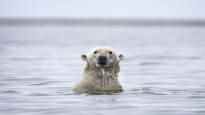Polar bears usually need solid sea ice for their hunting, which is declining rapidly. A previously unknown community has now been found in Greenland hunting for glacial rafts.
Scientists have found polar bears in southeast Greenland that survive without sea ice.
Three months of ice-free time is generally estimated to be a critical limit for polar bears. But the community now found will last much longer without ice.
The researchers found that polar bears have learned to hunt in an ice archipelago made up of rafters and mountains.
The DNA of the southern polar bears says they have been virtually separated from the living northern population for at least 200 years. However, the group has rarely received supplementation through individual individuals migrating from the north.
Polar bears are estimated to be extinct due to the decline of sea ice before 2100. The number of animals at present is estimated at about 30,000, and there are thirty southern ferry hunters.
Conditions off the coast of northern Greenland are expected to become similar to those now in the south.
Indeed, the southern population gives hope that polar bears will not become completely extinct during this century, especially if the more northern polar bears are able to adopt new lifestyles.
“This shows that at least a small number of polar bears could survive in the ice-free Arctic,” says Kristin Laidre From the University of Washington To the Guardian (going to another service).
